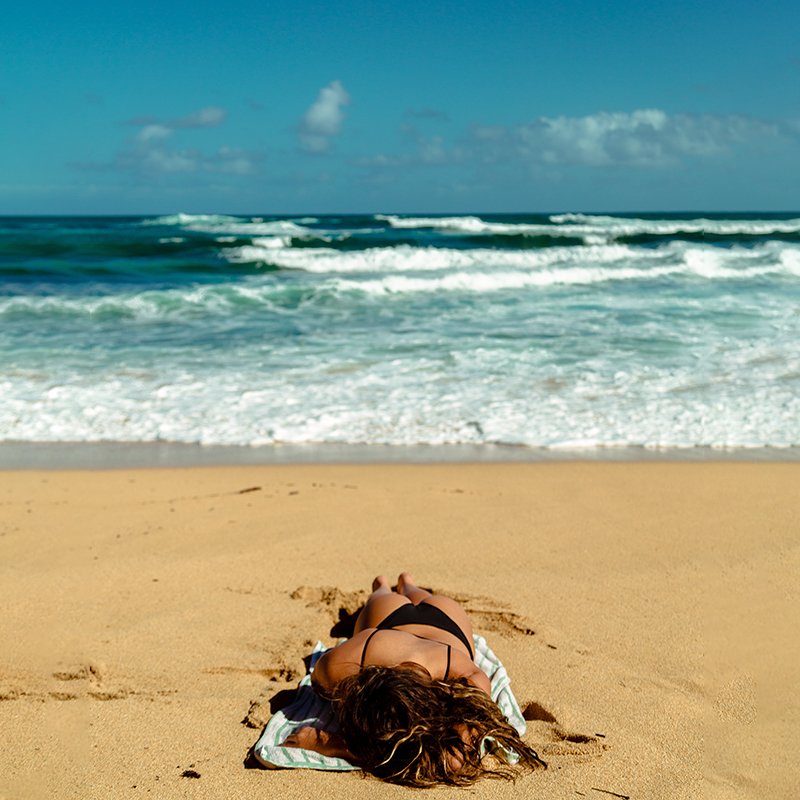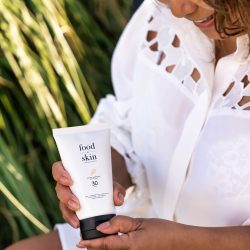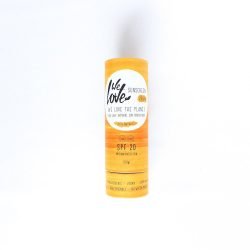An ethical sun care routine involves reef-friendly sunscreens and lotions that take care of our skin without damaging the planet.
It is an important step in becoming a sustainable consumer.
Caring for our ocean means caring for our survival: oceans are vital for the air we breathe (it produces over half of the world’s oxygen and absorbs 50 times more carbon dioxide than our atmosphere), for climate regulation (transporting heat from the equator to the poles), for food & medicines, transportation, recreation, and economic sustenance.
And, of course, it is the home to millions of species worldwide.
So first, let’s see why some of our consumer habits are problematic for marine (and human) life.
How do chemical sunscreens affect marine life?
Chemical sunscreens contain substances that absorb and reflect UVA and UVB rays. The problem is, many of those components threaten corals and other marine life. When we swim or shower, they enter our waterways and may cause a lot of damage.
Green Algae: Can impair growth and photosynthesis.
Coral: Accumulates in tissues. Can induce bleaching, damage DNA, deform young, and even kill.
Mussels: Can induce defects in young.
Sea Urchins: Can damage immune and reproductive systems, and deform young.
Fish: Can decrease fertility and reproduction, and cause female characteristics in male fish.
Dolphins: Can accumulate in tissue and be transferred to young.
Researchers have found that chemicals in sunscreen can awaken coral viruses. The coral then becomes sick and expel their life-giving algae. Without these algae, the coral “bleaches” (turns white), and often dies.
Which are the chemicals that can harm marine life?
- Oxybenzone
- Benzophenone-1
- Benzophenone-8
- OD-PABA
- 4-Methylbenzylidene camphor
- 3-Benzylidene camphor
- nano-Titanium dioxide
- nano-Zinc oxide
- Octinoxate
- Octocrylene
Oxybenzone is a particularly damaging component that can kill young corals or prevent adult ones from recovering after tissue damage. The substance also kills anemones within days of exposure. How? Scientists have found that corals can convert the oxybenzone into toxic chemicals. Therefore, some places, including Hawaii and Thailand, have banned oxybenzone-containing sunscreens.
Source: reefcheckaustralia.org
Together with climate change, unsustainable fishing, land-based pollution, coastal developments, and invasive species, chemical sunscreens are contributing to the depletion of marine life. Coral reefs, specifically, protect coastlines from storms and erosion, and are also a source of food, medicines, and tourism. Plus, they are ecosystems highly valued by indigenous people around the world.
Therefore, it is urgent that we begin to look for other alternatives in our sun care routine.
Reef-friendly sunscreens to protect our oceans
When we talk about “reef-friendly”, we’re typically referring to sunscreens that do not contain oxybenzone and octinoxate.
As we always encourage here at Bluehouse: read the labels! Sunscreens containing titanium oxide or zinc oxide, which are natural mineral ingredients, have not been found harmful to corals.
Also make sure it’s labeled as “non-nano” This means that the particles in the sunscreen are larger than 100 nanometers and therefore too large to be ingested by coral.
And try to avoid parabens, because they are harmful to our skin and some (lik Butylparaben) have been shown to cause coral reef bleaching.
(Another good tip is to cover up your body! Wear hats, sunglasses, light, long-sleeved clothing, and long-sleeved shirts).
We have curated some amazing products that support an ethical sun care routine: sunscreens for adults, for kids, and a very interesting natural suntan lotion!
Hier zijn er een paar:
Sources: National Ocean Service, Medical News Today, Science News, Coral.org, Noaa.gov



